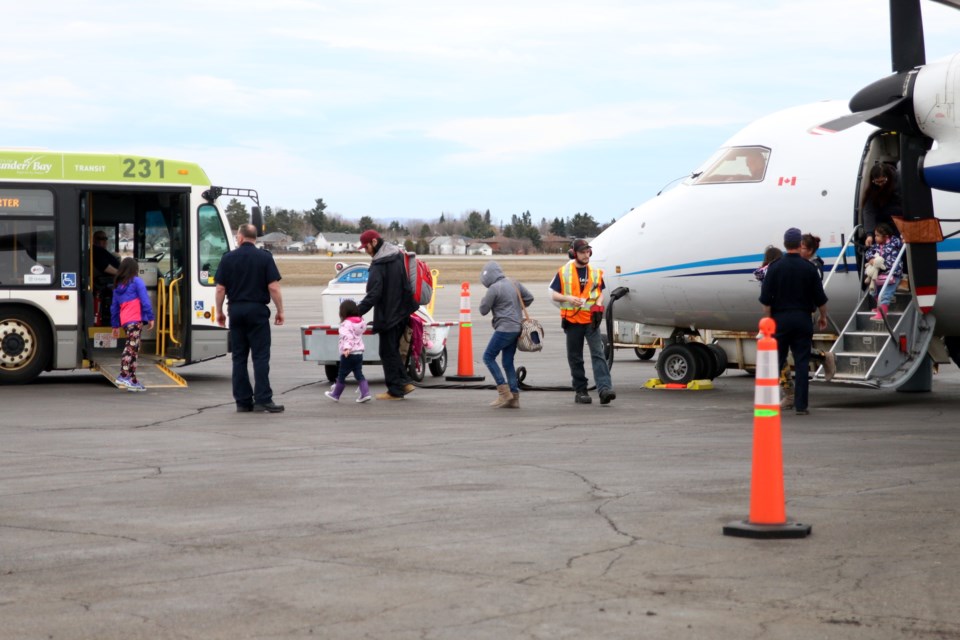THUNDER BAY - The people of Kashechewan First Nation appeared to be in good spirits as they stepped off the plane onto the tarmac at the Thunder Bay International Airport.
Approximately 48 people arrived early Saturday afternoon as part of a precautionary evacuation from the First Nation community along the James Bay coast.
“There was a little less anxiety on their end than leaving their homes in more of a rushed manner in the past,” said Thunder Bay Fire Rescue deputy chief, David Paxton. “It was more organized, a little more controlled in terms that they knew they were coming out on given days, they had more time to prepare.”
The city will be hosting approximately 250 people from the community with four flights expected on Saturday and an additional four flights on Sunday.
“Depending on weather and flight times and any issues up in Kashechewan it might slow the process, which would affect the end result and maybe extend to another day,” Paxton said. “But we may get it done in three flights tomorrow.”
Kashechewan First Nation, home to approximately 1,900 people, has been prone to flooding nearly every spring for the last several years due to ice break up on the Albany River. Last week, the chief and band council declared a state of emergency.
In 2017, a framework agreement was signed by Kashechewan, the provincial and federal governments, and Nishnawbe Aski Nation to examine the possibility of relocating the community.
Other communities, including Timmins, Kapuskasing, Smooth Rock Falls, and Cornwall will be hosting evacuees, with several other communities on standby if the need arises.
Because the evacuation was precautionary, Paxton said the process has gone very smoothly this year and people had more time to prepare, which hasn’t always been the case in previous years.
“In the past, we’ve seen the military involved with flights of over 100 people at a time coming out on C-130s,” he said. “This way it is more controlled.”
The evacuees will be staying at a local hotel and Paxton said it is difficult to say how long they will remain in the city with conditions on the Albany River difficult to predict.
“It’s hard to tell. It all depends on the break up of the Albany River,” he said. “Right now, the break up is going as expected where we are starting to see some movement of it, but it is still frozen. But that could change daily.”
“In the past, everything was going swimmingly perfect, but then they get some ice jams and the water levels rise 10 feet.”
